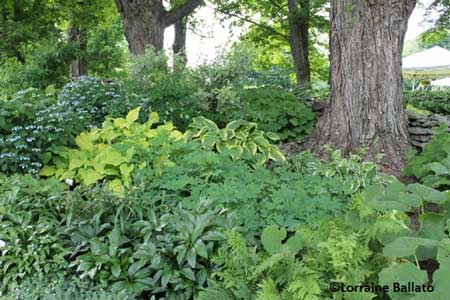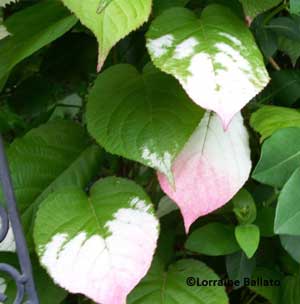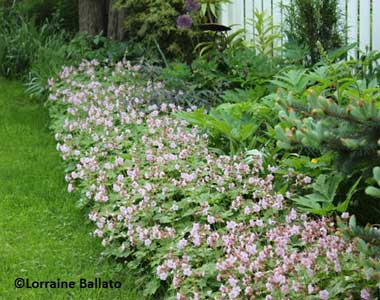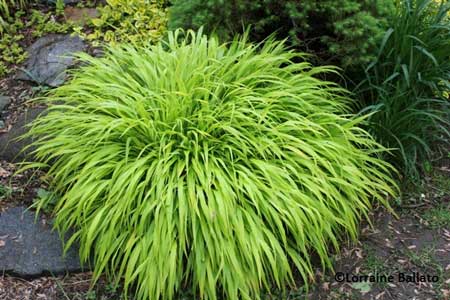 Shade garden
Shade garden
© Lorraine Ballato,
Gardening in dense shade may seem somewhat of a curse, but many gardeners have learned to think of it as an opportunity to establish a calm and serene garden space.
The good news is that many plants actually thrive in partial or full shade - the kind you find on the north side of a building, near conifers or under the dense foliage of say, a maple tree. In some cases you can improve growing conditions a bit by removing lower limbs of trees to let in more early morning and late day light which will help anything you plant at its base.
 'Arctic Beauty' male kiwi vine (Actinidia Kolomikta)
'Arctic Beauty' male kiwi vine (Actinidia Kolomikta)
© Lorraine Ballato
Your challenge will always be moisture. Those trees continually pull all the moisture and nutrients from the soil; so much so that the area in which they are planted is commonly referred to as "starvation soil" as trees impact all other vegetation which surrounds them. Hungry tree roots also make it hard to dig plants in, plus they resent being disturbed, all of which conspire to thwart your best efforts.
 Big root geranium (Geranium macrorrhizum).
Big root geranium (Geranium macrorrhizum).
© Lorraine Ballato
Much of what you plant has to able to withstand that drier environment; plus tree roots challenge your planting skills. Lastly, once you make a decision to plant there, resist the urge you may get later on to move what you’ve planted since tree roots don't like being disturbed.
 Japanese forest grass (Hakonechloa macra 'All Gold')
Japanese forest grass (Hakonechloa macra 'All Gold')
© Lorraine Ballato,
For a shaded wall, you can always grow a climbing hydrangea. It won’t flower, however, until it matures so give it at least three years to settle in. Minimally, it will cover a shaded area with lush, shiny greenery. 'Arctic Beauty' male kiwi vine (Actinidia Kolomikta) is a much more interesting colorful vine which produces a deliciously fragrant early summer flower. Its leaves change from green to dappled deep pink and white. In fact, if it doesn’t get enough shade, it won’t color up at all. Note that it is only the male vine which does this so be sure you purchase the right one!
An extraordinary ground cover for dry shade is big root geranium (Geranium macrorrhizum). One version gives you a lovely delicate pink flower before it settles down into a nice mounding growth habit for the rest of the season. It's even deer resistant in most gardens.
To lighten up a shaded area, you can try another deer resistant gem: the golden version of Japanese forest grass (Hakonechloa macra ‘All Gold’). It adds texture and acts like a beacon in those shaded areas.
There are so many other choices than you ever thought possible for deep shade besides throwing up your hands in frustration. A quick web search will reveal many more options than just covering the area with mulch or a garden ornament.
by Lorraine Ballato, Garden Writer and Author